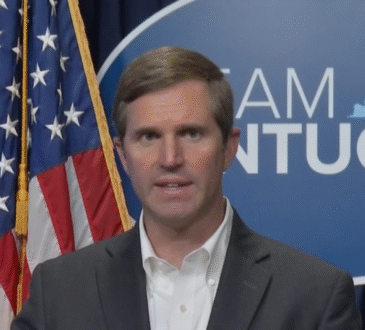
The Ali Forney Center has ambitious plans for its future.
The charity operates a drop-in shelter for LGBTQ+ youths in Manhattan, where more than 2,200 young people per year seek medical attention, counseling, clean clothes, or a hot meal. It also offers emergency and transitional housing for youth at risk of homelessness in neighborhoods across the city.
However, because the center operates in the region with the highest cost of living in the country, the charity was spending $2.1 million per year on rent, says Alexander Roque, its president and executive director.
He and his development team knew that if the nonprofit owned its properties, it could instead plow a lot of that money into programs. However, they also knew that raising money to buy real estate would require planning and executing a multiyear capital campaign, a time-consuming effort, during a period when demand for services was increasing.
The charity developed a novel solution — and created a pathway to financial resilience. Here’s what they did.
Strategic reserve funds mobilize money.
Roque went to the Tikkun Olam Foundation, which had supported the center’s operations and HIV programs for more than a decade. “We approached them and said, ‘We have a unique ask: We’re not asking for the money, we’re asking for a long-term, low-interest loan that would allow us to advance our efforts and become more sustainable through this process,’” he says.
We have a unique ask: We’re not asking for the money, we’re asking for a long-term, low-interest loan that would allow us to advance our efforts and become more sustainable.
That sparked the creation of a strategic reserve fund, seeded by the Tikkun Olam Foundation and administered by FJC: A Foundation of Philanthropic Funds. FJC gives traditional grants but also works with donors to help charities resolve funding gaps through loans and other creative financial solutions.
Finalized earlier this year, the strategic reserve fund enabled the Ali Forney Center to purchase property using a $1 million line of credit at a 3 percent interest rate over five years — well below the 7.5 percent industry rate at that time — and also create an emergency reserve to support operations and programs in the event of unforeseen problems.
These arrangements also mitigate risk for the funder. To provide the capital for the emergency reserve and the loan to the Ali Forney Center, the Tikkun Olam Foundation opened a donor-advised fund at FJC, says Sam Marks, CEO of FJC. When the loan plus interest are repaid, those funds replenish the DAF. As the owner of that account, the Tikkun Olam Foundation can recommend that another loan or grant be made to the Ali Forney Center — or a different nonprofit.
The Ali Forney Center had to prove to FJC that it would be able to make the loan’s quarterly interest payments based on projected fundraising goals and government capital funding that had been guaranteed but was not yet paid. Once repaid to the strategic reserve fund, that money can be used again, with the donor’s agreement, to support the charity’s other goals for diversifying its income, says Roque.
“In a time when there’s so much uncertainty in funding for myriad reasons, having an innovative approach to advancing investment and revenue-generating opportunities that is low-risk for the funder — and low-risk for the organization — is key.”
Borrowing from these funds can bridge funding gaps.
Strategic reserve funds often serve as bridge loans — for example, an affordable-housing organization that needs pre-development capital before it receives a construction loan, or a legal-assistance group that needs to pay lawyers to prepare for a long civil lawsuit, could benefit from such a fund, says Marks.
It’s not money to be spent, but is used to invest in ways that either return or recycle the capital multiple times or build capacity.
Several years ago, FJC worked with an anonymous philanthropist to create one such fund for the Southern Environmental Law Center as it challenged Dominion Energy and Duke Energy in federal court over the planned Atlantic Coast Pipeline.
“We had a donor who was a lawyer by profession and understood that there were certain expenses in mounting a lawsuit against big companies, that are recoverable when the nonprofit wins the case,” says Marks. “So we created a strategic reserve fund for these kinds of reimbursable expenses.”
While fighting the $8 billion natural-gas pipeline, the legal group drew on the reserve fund to pay for expert testimony and other direct litigation expenses. After emerging victorious and recovering fees from the energy companies, the Southern Environmental Law Center repaid the $270,000 it had borrowed, putting it back into the fund.
The fund still exists today at FJC, and continues to support the law center’s environmental-justice efforts; since its inception, it has supplied more than $2 million to the nonprofit, all of which has been paid back.
Specialized funds appeal to entrepreneurial donors.
FJC manages $430 million in 900 donor accounts, including strategic reserve funds, revolving match funds, and other specialized types of giving vehicles.
Marks says he has noticed that strategic reserve funds appeal to a certain type of philanthropist: “They tend to be larger donors. They tend to be donors that have started companies or founded companies, or they think more like a CEO or a CFO. They tend to be more curious about the inner workings of a nonprofit organization.”
They tend to be larger donors. They tend to be donors that have started companies or founded companies, or they think more like a CEO or a CFO.
Often they are trustees looking for creative ways to help the charities they govern, he adds. “A lot of times board members are intimately familiar with the business dynamics of a nonprofit and the problems that keep management up at night.”
DAFs have the most flexibility for borrowing agreements, says Marks, so FJC guides interested donors in how to use DAFs for this purpose when it’s the right solution.
A collective giving account, a variation of a DAF that combines money from many donors and distributes it to multiple grantees, is a similar solution. “This is what we get excited about — helping to facilitate these more creative uses of philanthropic capital,” says Marks.
These investments can help charities pursue new revenue streams.
Many donors give traditional gifts in addition to these more complex infusions of cash, Marks says, but strategic reserve funding carries a different set of expectations.
“Legally, it’s a grant,” he explains. “It’s not legally any different from any other grant, but it’s an understanding among the donor, the organization, and its board that the function of those dollars is meant to be different. It’s not money to be spent, but is used to invest in ways that either return or recycle the capital multiple times or build capacity for additional earned income and growth in the future.”
At the Ali Forney Center, the second purpose of the strategic reserve fund — and the one Roque says is even more important than real-estate acquisition — is to help the charity become even more financially resilient. His group will use the fund to develop the infrastructure to bill insurance companies for the services it offers that are covered by health plans, opening up a new source of revenue.
“We’re a homeless shelter. We’re not gonna charge our recipients for our services. That’s not how it works,” he says, but there are other methods to collect from its programs. “We’re a medical clinic; we’re a school; we’re a career- and education-readiness program; we’re a housing program; we’re a mental-health program. So there are ways that we can become an insurance biller and generate revenue off the services that we’re offering for free.”
We have the working capital to make bigger business decisions and adopt revenue-generating practices much sooner.
Lastly, the fund will make it possible for the Ali Forney Center to move forward with its plans for a social enterprise: a restaurant run by the young people it serves.
There are many advantages for a charity in using a strategic reserve fund, Roque says: “We have the working capital to make bigger business decisions and adopt revenue-generating practices much sooner. Compared to a capital campaign, where it’s very specific — largely for a building and in some cases to a business function. This is more diverse.”
At the same time, the arrangement offers donors the opportunity to lend money with charitable incentives. “They get the DAF tax benefits, they get foundation tax benefits,” Roque says, “and they get their money back [for future charitable purposes] while having a more substantial impact on our work.”




